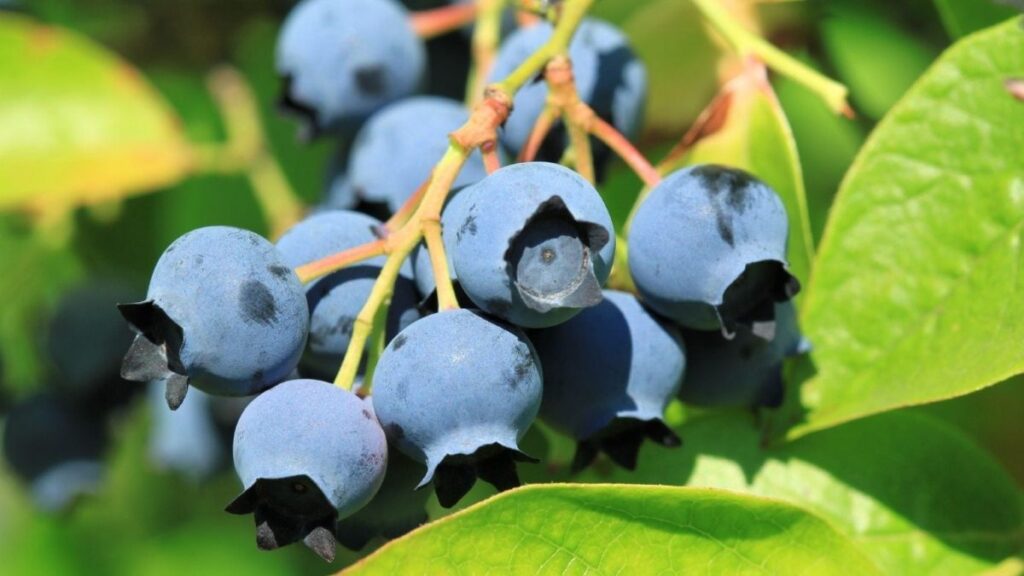Growing a blueberry garden on your balcony is a rewarding and practical way to enjoy fresh, homegrown fruit, even if you’re a beginner with no gardening experience. With a little planning and care, you can turn your small outdoor space into a thriving blueberry haven. Here’s a simple guide to help you get started.
Understanding Blueberry Requirements
Blueberries are relatively easy to grow, but they do have specific needs that you must meet for a successful harvest. The key factors for growing healthy blueberry plants are the right soil, good sunlight, and proper watering.
Blueberries thrive in acidic soil with a pH level between 4.5 and 5.5. It’s important to check your soil before planting to ensure it meets these requirements. If your soil is too alkaline, you can adjust it by adding organic matter or special soil amendments designed for acid-loving plants. Blueberry plants also require full sunlight for at least 6-8 hours a day, so pick a spot on your balcony that gets plenty of sunlight.
Choosing the Right Blueberry Varieties

When choosing blueberry varieties for your balcony garden, it’s essential to select those suited to container growing. The most common types of blueberries are highbush, lowbush, and rabbiteye varieties. For a small balcony garden, dwarf or compact highbush varieties are ideal. These varieties, such as ‘Top Hat’ or ‘Jelly Bean,’ are perfect for container planting and tend to stay small while still producing a good yield.
It’s also worth considering whether you want to grow a single variety or multiple types of blueberries. If you want to increase your chances of cross-pollination and a better harvest, planting two or more different varieties will help. Some blueberry varieties are self-pollinating, but others benefit from cross-pollination, which can lead to larger and sweeter berries.
Selecting Containers for Your Blueberry Garden

One of the most crucial elements in starting a balcony blueberry garden is selecting the right container. Blueberries have shallow roots, so a container that is deep enough to accommodate their root systems is essential. A container that is at least 18-24 inches in diameter and 12-18 inches deep will provide enough space for growth.
Opt for containers that have good drainage holes to prevent water from accumulating at the bottom, as blueberries do not like sitting in waterlogged soil. You can use ceramic, plastic, or fabric pots just ensure they’re sturdy enough to hold the plant as it grows.
Planting Blueberries in Containers

Once you’ve selected your container, it’s time to plant your blueberries. Start by filling the bottom of the container with a layer of gravel or small stones to improve drainage. Next, add a well-draining acidic potting mix specifically designed for acid-loving plants. You can find these mixes at most garden centers.
When planting your blueberry bush, make sure the top of the root ball is level with the surface of the soil. Gently firm the soil around the roots and water thoroughly. It’s essential to keep the soil moist but not soggy, as blueberries prefer consistently moist soil but don’t like being waterlogged.
Positioning the Plants
Blueberries require plenty of sunlight to grow and produce fruit. Place your containers in a spot on your balcony where they’ll receive at least 6-8 hours of direct sunlight each day. A sunny, south-facing balcony is usually the best spot, but if your balcony doesn’t get that much light, you can still grow blueberries with the right care.
In colder climates, it’s a good idea to move the containers to a more sheltered area during the winter to protect the plants from extreme cold. Alternatively, you can use frost covers or blankets to insulate the plants during freezing temperatures.
Watering and Fertilizing
Blueberries need consistent moisture, so watering is an important part of the process. Water your plants regularly, especially during dry spells. Make sure the soil stays moist, but avoid overwatering. The best way to check if your plants need water is to stick your finger into the soil. If it feels dry a few inches below the surface, it’s time to water.
Fertilizing is also crucial for blueberry growth, but it’s important not to overdo it. Blueberries are sensitive to high levels of fertilizer. Use a balanced, slow-release fertilizer designed for acid-loving plants, and apply it according to the instructions on the label. Too much fertilizer can damage the plants, so less is often more.
Pruning and Maintenance

To encourage healthy growth and improve fruit production, regular pruning is essential. Prune your blueberry bush every year to remove dead or damaged wood and encourage new growth. The best time to prune is in early spring before the growing season begins. You can also remove any weak or leggy branches that could limit airflow or sunlight.
In addition to pruning, be on the lookout for pests and diseases that might affect your blueberries. Common issues include aphids, spider mites, and fungal diseases. If you notice any pests or signs of disease, treat your plants with organic methods or insecticidal soap, depending on the problem.
Harvesting Your Blueberries

One of the most exciting parts of growing blueberries is harvesting the fruit. Blueberries typically start producing fruit in their second or third year, but you may see a small crop in the first year as well. Wait until the berries are fully ripe before harvesting. Ripe blueberries are plump, firm, and have a deep blue color.
To harvest, gently pull the berries off the bush. If they don’t come off easily, wait a few more days. Harvesting blueberries can be a fun family activity and a rewarding way to enjoy your hard work.
Winter Care for Blueberry Plants
During the winter months, blueberries may enter dormancy, especially in colder climates. If you live in an area with freezing temperatures, consider moving the containers indoors or to a sheltered space, such as a garage or shed. You can also wrap the containers in burlap or frost cloth to protect the roots from freezing.
If your balcony is in a warmer climate, you may not need to worry about winterizing your blueberries. However, always check on them to make sure they’re not exposed to extreme cold or dry conditions.
Conclusion
Starting a balcony blueberry garden is an enjoyable and fulfilling project, even if you have no previous gardening experience. By choosing the right varieties, providing the necessary care, and maintaining proper watering and sunlight, you can enjoy fresh blueberries right from your balcony. With patience and attention, you’ll soon be reaping the benefits of your homegrown fruit. Happy gardening!



